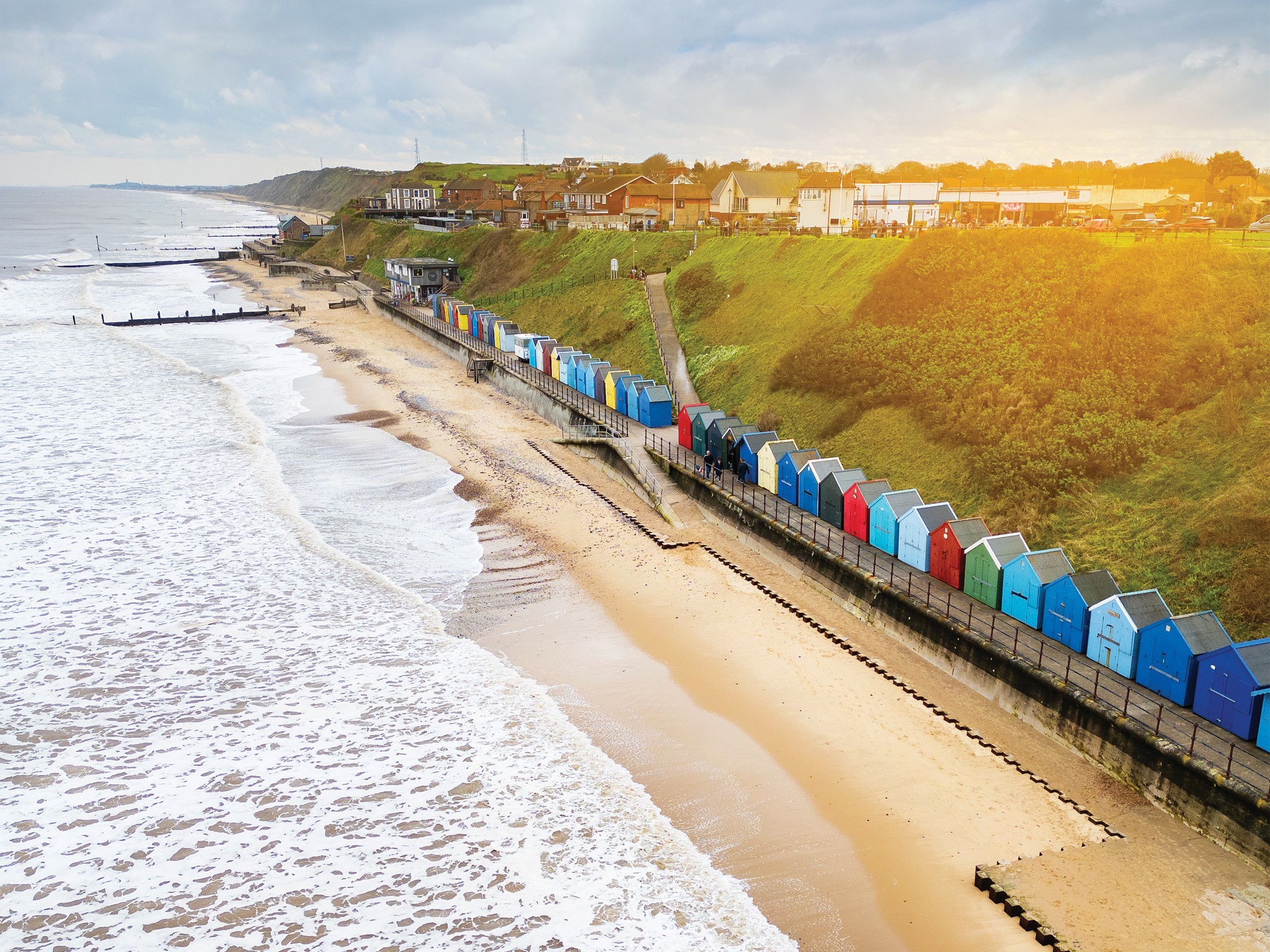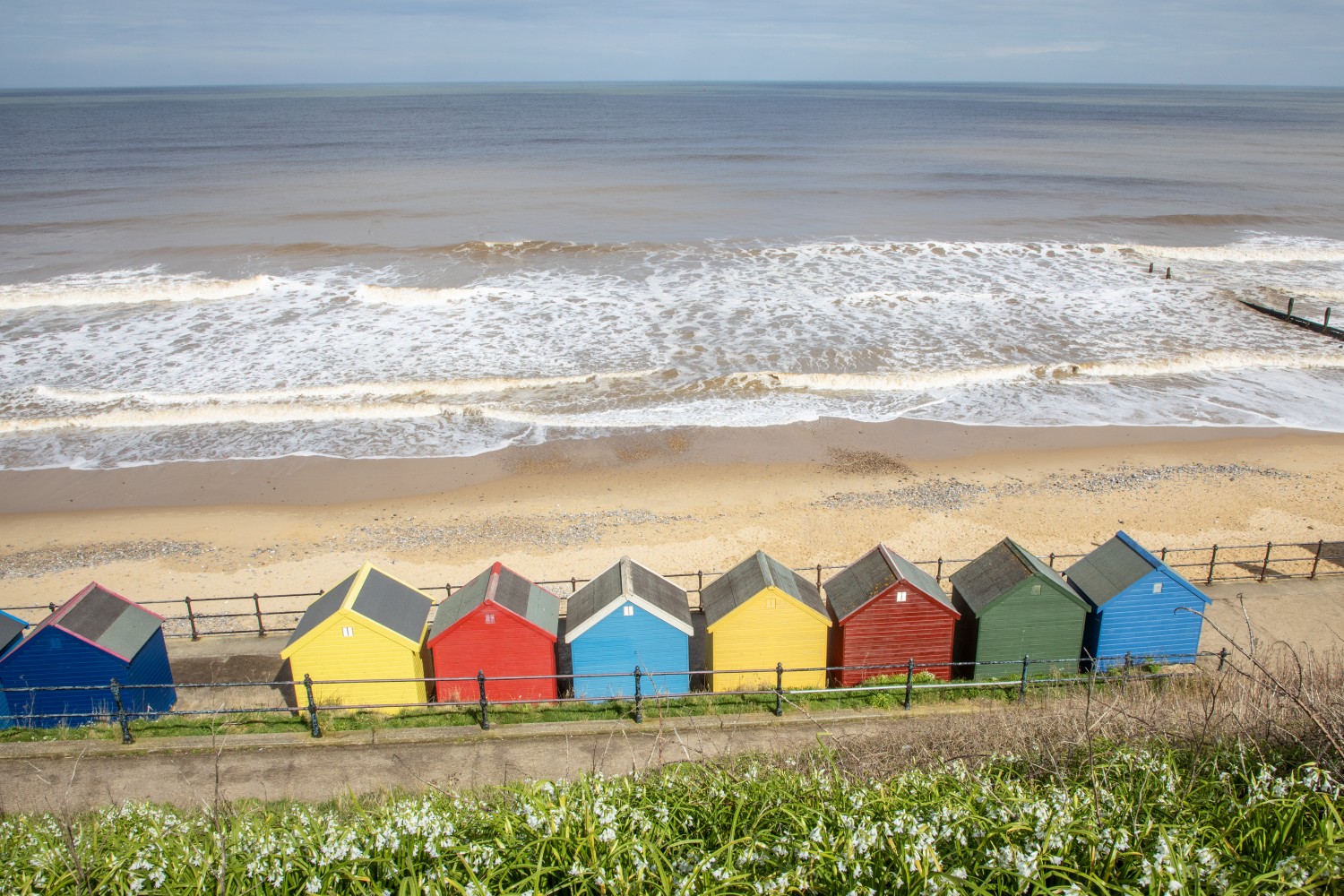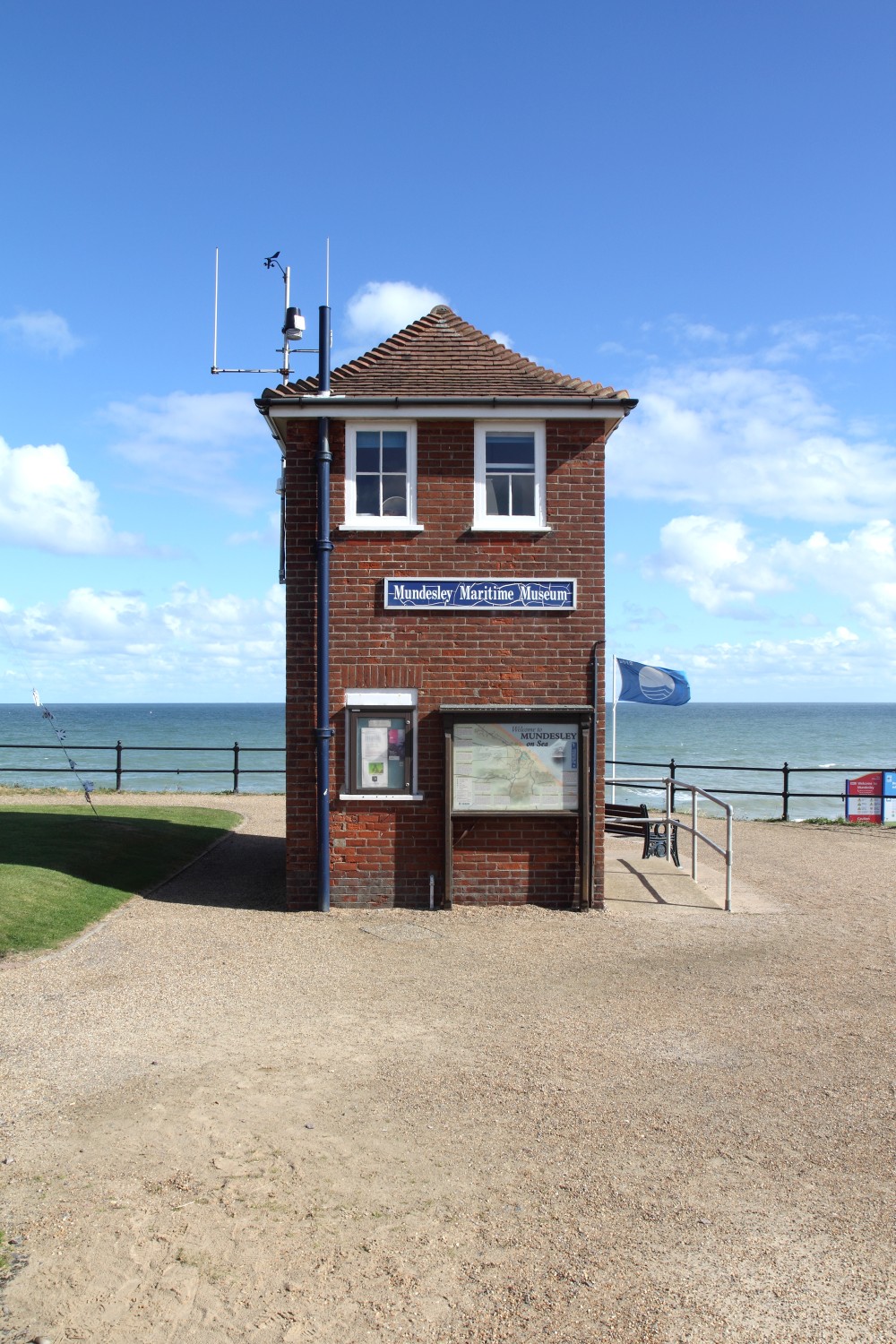
A sea of tales and treasures at Mundesley beach
A short drive east of Cromer, Mundesley is a small seaside village with a beautiful beach, a rich history and a wealth of hidden wonders to discover
As temperatures continue to formed over half a million years ago county’s coast during the summer during the Ice Age.
Colourful beach huts line the promenade, adding to the gorgeous scenery. They’re available to hire on a weekly basis, offering visitors an inviting opportunity to enjoy a full day relaxing and swimming in the shallow waters.
You would also be remiss not to partake in some of the atmospheric walks in the area, either along the promenade that extends for a couple of miles or along the top of the cliffs towards Cromer. With such tranquil surroundings, it is no surprise that this little village has been a well-kept secret for many decades.
As the expansion of the railways swept through Norfolk during the late 1800s, Victorians flocked to our climb and the sun becomes a more frequent fixture in the sky, many are looking to the charming towns along North Norfolk’s coast for a classic summer trip to the seaside. While most will head to merry Hunstanton, enchanting Wells-next-the-Sea, or even further to vibrant Cromer, there’s just as much wonder to discover in the little village of Mundesley.
Those unaware of Mundesley will be delighted to learn it boasts one of the finest sandy beaches in the UK, stretching for miles against a backdrop of beautiful amber cliffs. The cliffs themselves are categorised as a Site of Special Scientific Interest as they hold unique marine and freshwater deposits, months and Mundesley became an increasingly popular destination. It was around this time that the femur bone of a Steppe mammoth was found encased in the cliffs at nearby West Runton, one of the largest mammoth bones to have been uncovered in Britain.
A life-size replica of the impressive femur is displayed near the National Coastwatch Institute (NCI) lookout station, along with other remarkable facts about the Deep History Coast that Mundesley is a part of.
Those volunteering with the NCI spend their days surveying the sea to keep fishermen, locals and tourists safe. The station itself is relatively small, but it sits proudly atop the cliffs and can be seen from far along the beach.

PICTURES: Blessed with bright beach huts, golden sands, safe swimming facilities and a rich history, Mundesley Beach is a gift
that keeps on giving. The Maritime Museum overlooking the beach is believed to be one of the smallest in England (above).
Mundesley was the second location in the country to have a lookout station established by the NCI. It had humble beginnings in 1995, with just a few volunteers and a handful of equipment, but those volunteers were dedicated to being on watch every day of the year.
The station overlooks an area of the North Sea that was renowned for being incredibly treacherous to merchants
in the 18th century. In 1724, Robinson Crusoe author Daniel Defoe published his ‘Tour Through the Eastern Counties of England,’ in which he detailed the strife that mariners often encountered when sailing along the North Norfolk coast. His narrative includes a harrowing account of a fleet of empty coal ships which were caught in dark and turbulent conditions whilst on route to King’s Lynn.
“About the year 1692, a fleet of 200 sail of light colliers went out of Yarmouth with a fair wind and were taken short with a storm.”
The account details how very few of the vessels could find their way in the harsh and shadowy conditions, noting that: “the rest being above 140 sail were all driven on shore, and dash’d to pieces, and very few of the people on board were sav’d.”
Defoe reported that this passage of water around Cromer extending to Mundesley was nicknamed ‘the Devil’s Throat’ by sailors because of how easy it was to be knocked off course and driven into the cliffs by strong winds.
We have less trouble traversing these waters nowadays, but it can become very dangerous very quickly for those swimming in the sea. It’s fortunate there are diligent volunteers keeping watch for changing conditions and communicating with Mundesley Lifeboat to keep everyone safe.
On the ground floor of the National Coastwatch station is the Mundesley Maritime Museum. Open from April to August and staffed by another team of passionate volunteers, this gem is one of the smallest museums in England.
Enthralling new exhibits are showcased each year to engage both locals and tourists with the history of the village. Past displays have featured Mundesley Railway and locally found fossils, including mammoths, elephants and even hippopotamuses.
Outside the museum is a World War II memorial, remembering the Royal Engineer bomb disposal personnel who were sadly killed whilst clearing landmines from the shore during and after the war. It’s because of their valiant efforts that the cliffs and beaches surrounding Mundesley are safe for all to enjoy today.
Unassuming to some, this little seaside village has a rich and variedhistory, and with the scenic walks and beautiful coastline surrounding it, there is something to suit every type of tourist. Best take a trip now before the secret gets out.

